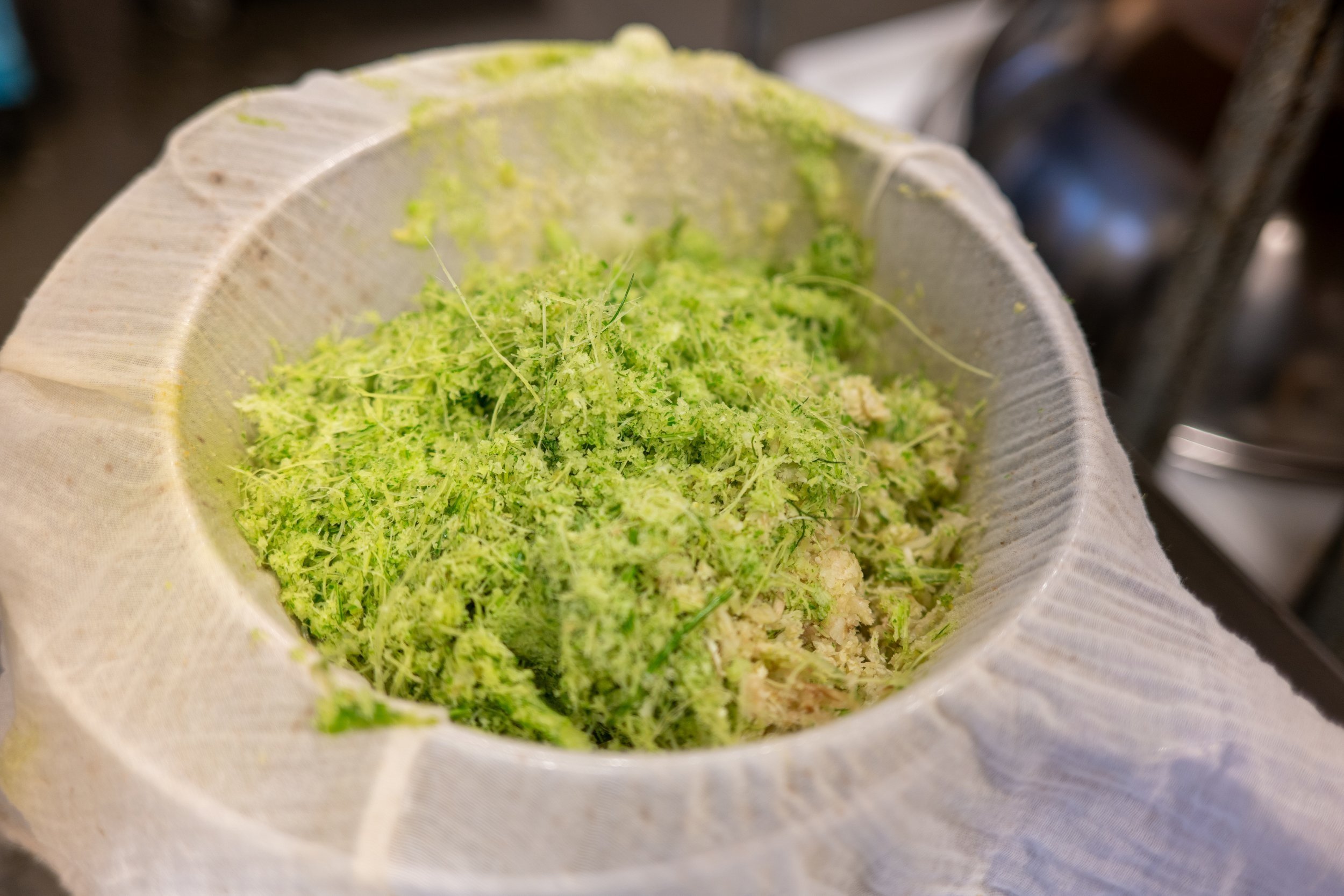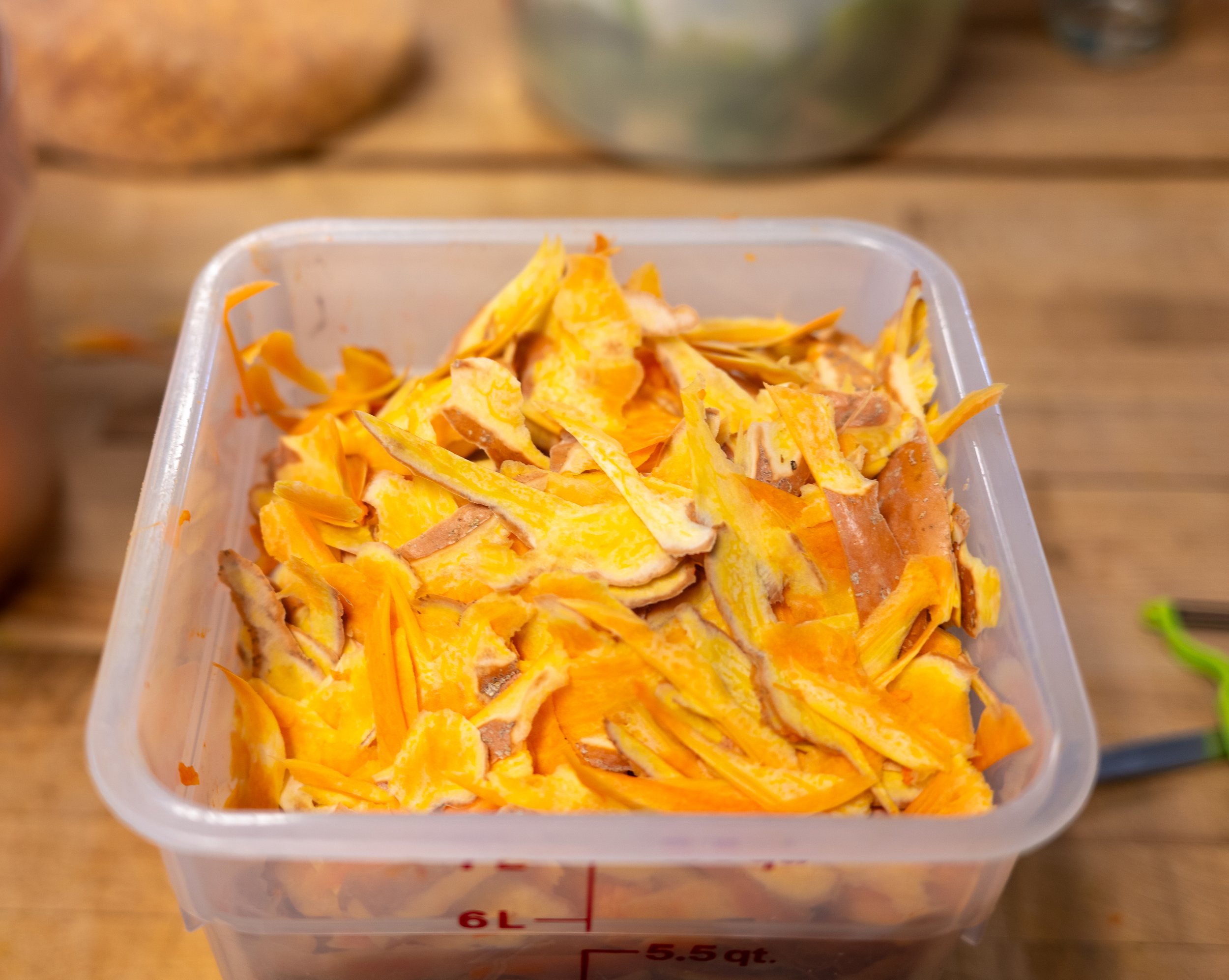The Week In Review January 15-19
The week in review. I’m not entirely sure how to go about this. I think, perhaps, that the doing of it will inform how it gets done. So, I’ll just plow ahead and see what comes of it. It is likely that time constraints and the photos that I end up with at the end of the week will inform how this shapes up as much as anything. One thing is for certain: this won't be a comprehensive account of the week's activities and production. At The Shop, we are in production Monday-Friday. Mondays are my day to attend to our home, garden, and life outside The Shop. Alex is at The Shop an average about 65 hours during our production week while I’m there about half of that time. I’m just not around to record everything that goes on. I’d like these reviews to be mostly photo essays, and I can’t always step back from what I’m doing to photograph it, or to photograph what's happening on the other side of the Shop- and, unfortunately, so many of my photographs turn out to be not worth sharing. So, with that said, here are some things that went on at The Shop this week:
TUESDAY
Burdock from Wintergreen Farm
-We are in Burdock season. We’ve always loved working with Burdock and have cooked with it since we were kids, just out of school, living on a small farm way up in the hills of Northern Mendocino. Burdock is the long tap root of a thistle plant. I don’t know anything about growing burdock but there aren't many farms that grow it and most of the burdock that we’ve been able to find locally is pencil-thin. We get our Burdock from Wintergreen Farm in Oregon, it’s consistently big and beautiful. We have done many projects with Burdock over the years, including Kimchis and Misozuke, but by far our most common and favorite use for it is for Kasuzuke. Burdock fermented in Sake Lees. Takari Sake, one of the larger sake producers in our region, is just a few blocks from The Shop. We essentially tap into their waste stream; we get the byproduct from their fermentation, which is a paste made up of rice, rice koji, and yeast. We take that paste, called kasu or sake kasu, and we add sugar to it, to feed the yeast that is still living in it; we add salt to it to moderate the fermentation and for texture preservation, and then we bury vegetables, such as Burdock, in it for an average of 12-18 months. For the past couple of weeks, we have been harvesting the Burdock Kasuzuke that was started in December of 2022 and starting this year's ferments, which will be harvested next winter. I wrote a blog post (click here ) almost 11 years ago on our burdock kasuzuke, and looking back at it, most of the information still holds true. On Tuesday, we began a two-day salt press of the burdock. We also harvested and jarred up a batch of Kasuzuke burdock started on Dec 27, 2022.
Burdock salted at 6%
a 12 month ferment of Burdock in Sake Lees ready to harvest
Burdock Kasuzuke in Jars
-Eggs for the weekend. Usually, I start the eggs for the weekend rice bowl addition on Wednesdays. But, it was a light day on Tuesday so I got a jump on it. We like to have 6 dozen eggs on hand for the weekend. We get our eggs from Riverdog Farm, which, if you've ever been to the Berkeley Farmers Market, you know people line up for them, and for good reason. We cook the eggs for 6-and-a-half minutes to soft boil them and marinate them in a mixture of tamari, shiso vinegar, and sake lees from last year's Kabocha squash ferment. The shiso vinegar is a shiso kombucha that has gone too acetic, or vinegary, to use as a beverage. However, the shiso flavors are still nice and clean, so we long age it into a mild vinegar. These are a delicious twist on a traditional Ramen Egg. The secret ingredient is the sake lees from a previous year's ferment instead of Mirin. When we make Kasuzuke, we ferment vegetables in the lees for an average of 12-18 months. At the end of the fermentation time, when the vegetables are ready to harvest, they are removed from the lees, jarred up, and sold as a pickle, kasuzuke, which means pickled in kasu. We hold on to the remaining kasu, and we age it out. We have a whole archive of variously aged and flavored kasu dating back to 2011. We use the aged kasu like you might use a miso. We use it as a seasoning, as a condiment, and to make a broth to simmer vegetables in. The kasu gives the marinade a foundation of mature and complex umami that you just can’t find in your average store-bought mirin.
Eggs Shocked after a 6 1/2 minute boil
Eggs curing in a mix of Tamari, Shiso Vinegar, and Sake Leed from last years Kabocha Squash Ferment.
-Some more prep for the weekend. The Dashi we serve at the beginning of our Rice and Pickles meal is a Kombu Dashi. We select some byproducts from our production week, the peels, pulps, innards, etc, from the various vegetables we’ve worked with. We simmer those all day on Fridays, and on Friday night, we cold infuse the broth with Kombu seaweed, which gives it some viscosity, and some ocean umami, and makes it a dashi.. We reserve the Kombu from the weekend's dashi, and we use it for other projects. On Tuesday, we took the Kombu from last week's dashi, julienned it, and mixed it with Misozuke Garlic. The garlic is a young garlic harvested in June of 2022 and buried in a Hatcho miso, where it has been fermenting ever since. The garlic and the miso are minced together and mixed with the kombu and will be used on this weekend's rice bowl.
Kombu from last weeks Dashi
Misozuke Garlic
Wednesday
Pickles- All sorts.
Fairytale Pumpkin
-Fairytale Pumpkins for three projects. The Musquée de Provence or Fairytale is a beautiful heirloom pumpkin with deep orange flesh and a gorgeous, delicate melon flavor. From what we understand, it is difficult to grow, which may explain why it's difficult to find. However, once we had an opportunity to work with them, we couldn’t work with any other variety. Indeed, the Fairytale is the only pumpkin we use in our work. We originally bought our pumpkins from the legendary grower of heirlooms, Annabelle Lenderlink, who after repeated crop failures stopped growing them. For many years we have been working with Feather River, who grows exceptional pumpkins- but this year, their crop failed. We were delighted to find that Riverdog grew them this year and that they were well worth preserving. On Wednesday, we broke a number of them down and assessed them for color and flavor. We processed some on the machine with a 2mm slice to be brined for Kimchi, on the 1mm slice to be mixed with our Indian Pickled lime for the weekend's Rice bowl, and we sliced some by hand to be salt pressed for kasuzuke.
Fairytale Pumpkin Broken down for processing
Fairytale Pumpkin sweating in 6% salt ready to be weighted for 2 days.
-Cauliflower was broken down into florets to be fermented with ginger, onion, turmeric & mustard seed.
Started a batch of Carrots fermented in a Ginger and Turmeric Brine. Winter is really the best time to preserve carrots. The cold concentrates the sugars yielding beautifully sweet carrots. One of our favorite ways to preserve carrots is whole in a brine with fresh grated ginger and turrmeric. The result is delicious and an excellent snacking pickle.
Carrots arranged in the tank awaiting a Ginger & Turmeric Brine
Thursday
Several smallish projects, including:
Wheatgrass for juicing
- Juicing Wheatgrass fo for a Wheatgrass-Nettle Kombucha, a fermented Nettle tea with the juice of wheatgrass added.
Nettle SCOBY
Wheatgrass-Nettle Kombucha
-Mandolinning Daikion, Scarlet Queen Turnips, and Burdock root for the three quick pickles for the weekend's Rice Bowl. The Daikon will be marinated in Yuzu Kosho, the Scarlet Queen Turnips will be pickled in the brine from our Umeboshi plums, and the Burdock root will be put into a fermented mash made from Rice, Rice Koji, and Barley Shochu for Bettarazuke.
Scarlet Queen Turnips
Scarlet Queen Turnips in Ume Brine
Daikon
Daikon in Yuzu Kosho
Burdock
Burdock Bettarazuke
-The Burduck that was salted on Monday will be buried in Sake Kasu to begin a year-long ferment.
Burdock in Sake Lees ready for a 1 year ferment
Friday
Completing some projects and prep for the weekend. Kombucha.
Fairytale Pumpkin Brined for Kimchi
-The pumpkin that had been brining for kimchi since Wednesday was drained in the morning and left to dry for the day. In the evening, the kimchi was assembled and put into crocks. For our small batch kimchis, we use Japanese Mashiko Ware crocks. These mid-century Mashiko Ware pots were imported from Japan in 1965 by the Takahashi Trading Co, which was started by Henri & Tomoye Takahashi when they returned to San Francisco after being held in an internment camp in Utah during WWII. The business grew, with several locations throughout the Bay Area and one in New York City. Henri passed away in 2002, and Tomoye passed away in 2016 at the age of 101. We were lucky enough to have an opportunity to purchase several of these crocks. We use them for Nukazuke and small-batch lacto-fermenting.
Pumpkin Kimchi in Mashiko ware crocks
Mid-Century Mashiko ware crock
-We juiced Fennel and Pomegranates for Kombucha. The Fennel pulp was kept and simmered along with pumpkin skins for the weekend's Dashi.
Pomegranates
Juicing Pomegranates
Pomegranate and Fennel Juice
Pomegranate and Fennel Kombucha
-Nettles were blanched and shocked. They were minced and marinated in miso tamari from our Sweet White Miso production to be used on the weekends rice bowl..
Nettles
Nettled blanched ready to mince
Nettle in Miso Tamari



































